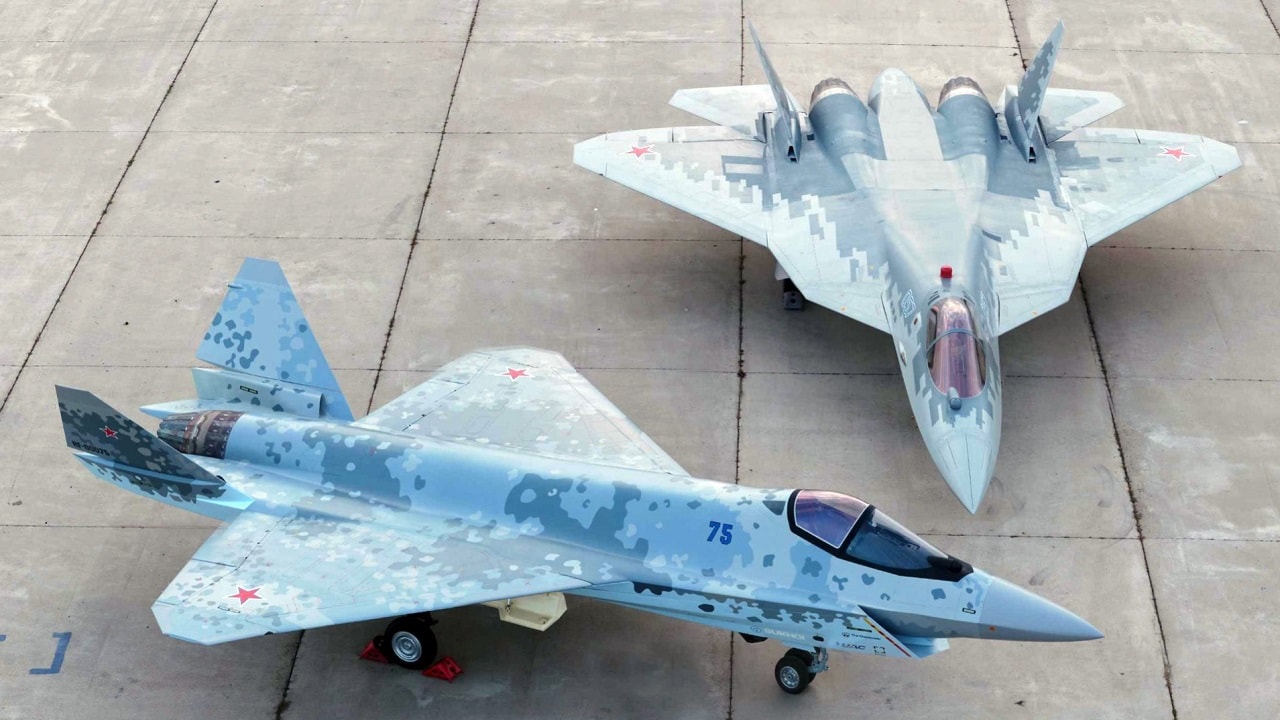Russian officials continue to tout the capabilities of its Sukhoi Su-75 “Checkmate” fighter, and on Friday announced that the initial batch of the bargain basement fifth-generation combat aircraft would be produced in 2026. Efforts with the Checkmate are apparently moving forward, and the design is reportedly ready for full-scale production.
“The pre-production batch of the Su-75 light tactical aircraft… should be manufactured in 2026,” stated a document released at this month’s 7th Eastern Economic Forum (EEF) which was held in the Far Eastern city of Vladivostok, and obtained by Tass.
The Russian state media outlet also reported that Yury Slyusar, CEO of the United Aircraft Corporation (UAC), had previously said in an interview that the company plans to produce four Checkmate prototypes. He had claimed that advanced super-computer technologies were being utilized in the Checkmate project, which enabled the company to substantially reduce the cost and time to build the first four prototypes.
Flight testing is currently scheduled to begin in 2024.
Another significant advantage for the UAC is that its prototypes utilize equipment and components from the Su-57 (NATO Reporting name “Felon”), Russia’s fifth-generation stealth aircraft that has been in development for more than a decade. By “recycling” the R&D, relying on components could be crucial to any effort to meet the single engine’s Su-75’s tight timeline – but it should be noted that the Su-57 still has yet to reach full rate or serial production.
Su-75: Making Moves
The Checkmate light tactical fighter developed by Sukhoi (part of the Rostec United Aircraft Corporation) was first presented to the public at the MAKS-2021 air show outside of Moscow last summer, while it made its foreign debut at the Dubai Airshow 2021 in the United Arab Emirates.
Primarily as an export aircraft, the Su-75 Checkmate is based on a modular design, which could allow it to utilize a variety of fifth-generation technologies. Moreover, the UAC chief has said that development is now focused on a “baseline single-seat” variant of the fighter as well as an unmanned version.
“The work on the Checkmate’s unmanned version has been ongoing since the early stages of designing. The unmanned version can be created alongside the single-seat airplane,” Slyusar continued. “The potential for the unmanned aircraft’s flight tests will be developed as part of the outpacing work on the manned version.”
The single-engine fighter will incorporate stealth technology, and that will include an internal weapons bay to carry air-to-air and air-to-surface missiles, which indicates that the Su-75 could serve as both an air superiority and ground attack aircraft. It can carry a payload of more than 7 tonnes of armament, and reportedly will be capable of striking up to six targets at a time. Current specifications, which haven’t actually been put to the test or confirmed, call for the aircraft to have a top speed of Mach 1.8 and an operating range of 3,000 km. It will also have an open architecture configuration to meet the customer’s requirements and unique artificial intelligence technologies.
Although Russia has boasted that it would be more affordable than the F-35 Lightning II or Sweden’s JAS-39 Gripen, it isn’t clear if its capabilities are actually on par with those advanced aircraft.
Coming Soon – Maybe, Maybe Not
The Su-75 was developed to be a low-cost fifth-generation aircraft for the foreign market. Russia has widely touted its weight-to-power ratio while highlighting that each aircraft has a price tag of just $25 million to $30 million.
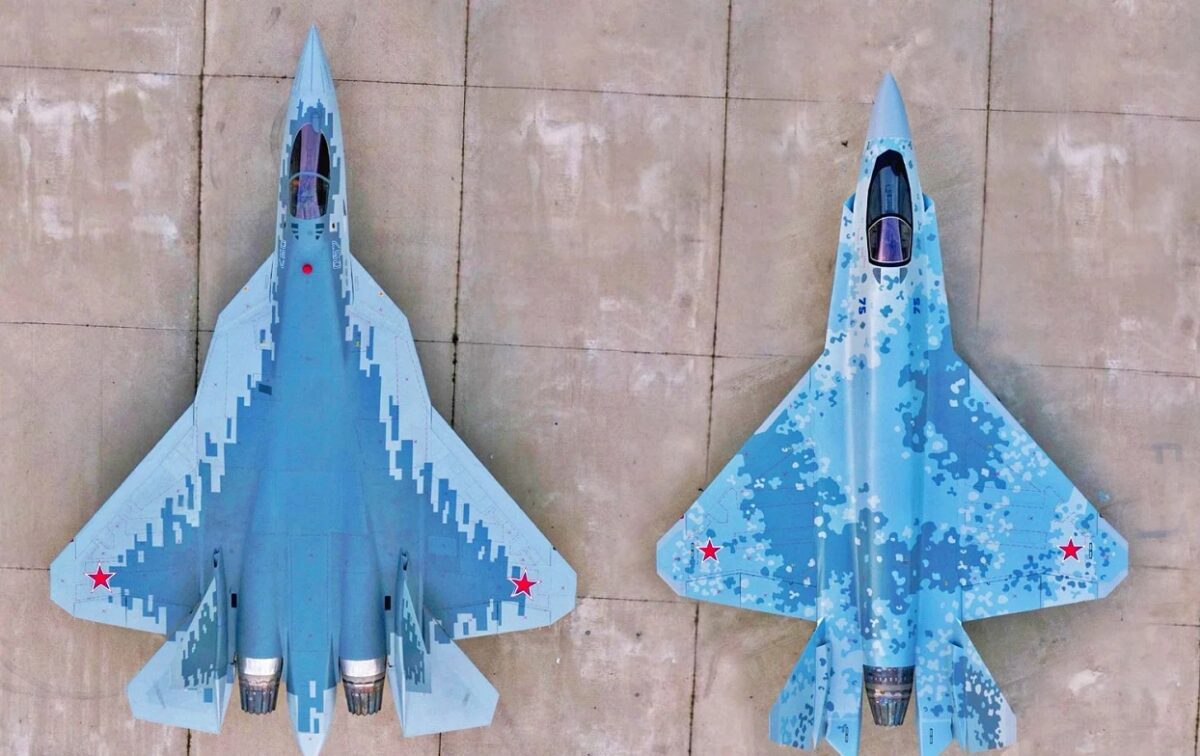
Su-57 and Su-75 Side-by-Side. Image Credit: Rostec.
Given the global economic sanctions imposed on Russia since it launched its unprovoked and unwarranted invasion of Ukraine, it is unlikely that Moscow will even be able to serially produce the Checkmate in significant numbers, and it remains unclear if any nation would be eager to purchase it. A major factor remains whether Moscow would be able to supply the parts to keep the aircraft in the skies. The issue has been so great that Rand Corp. has declared the Checkmate to be little more than “vaporware.”
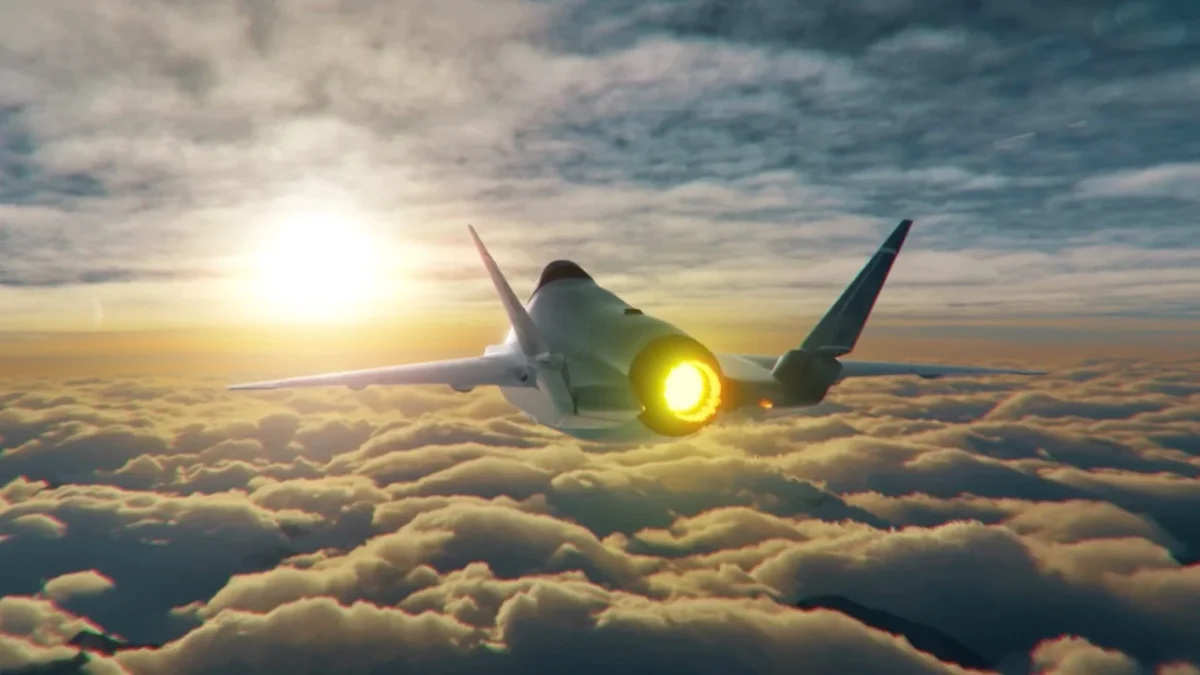
Su-75. Image Credit: Russian Government.
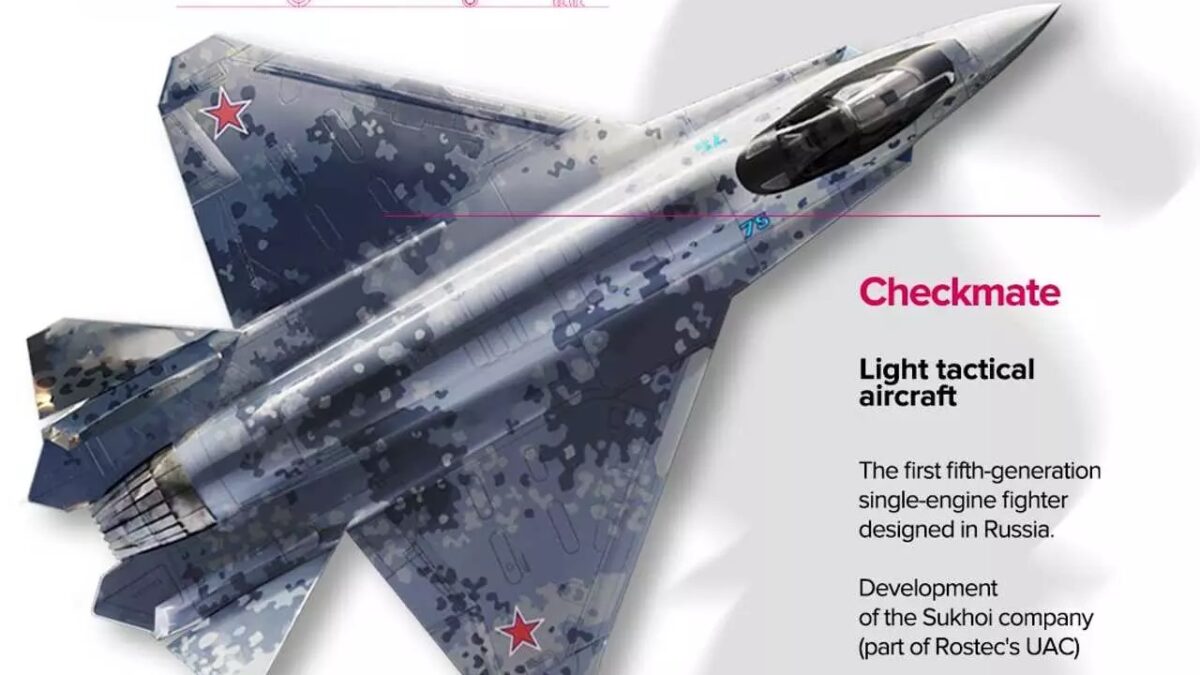
Su-75 mockup image. Image Credit: Creative Commons.
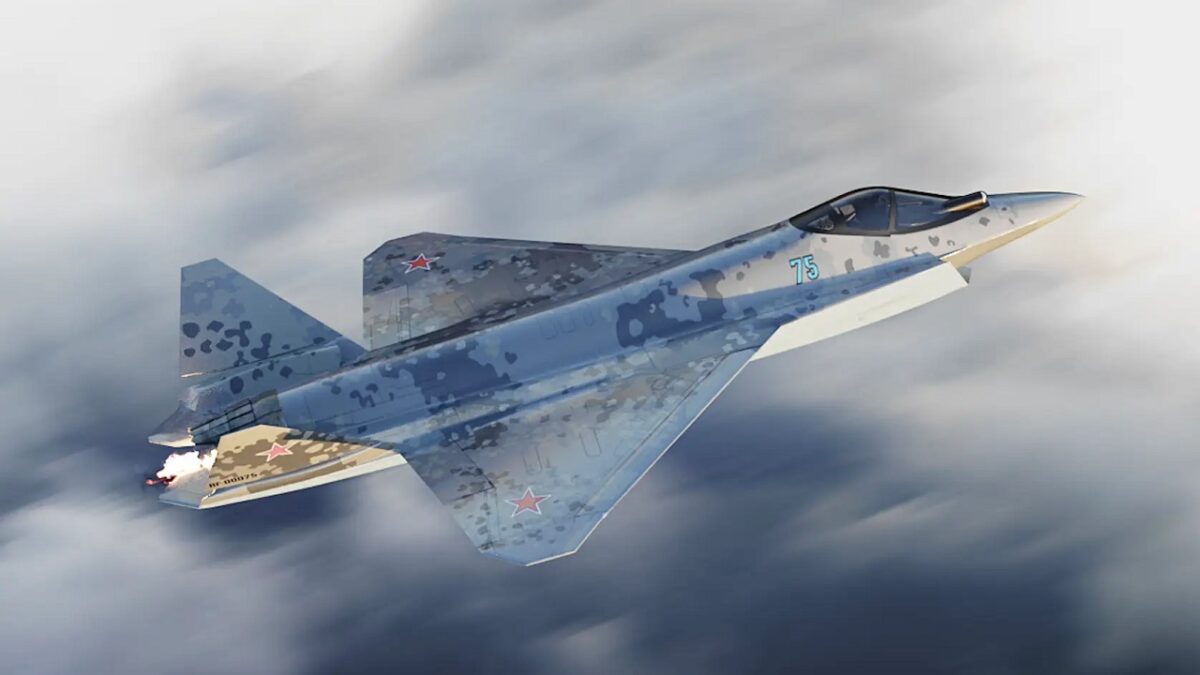
Su-75 Checkmate. Image Credit: TASS.
As such issues have yet to be resolved, it is likely foreign sales won’t come until the initial production ramps up – and when that initial production actually is completed.
A Senior Editor for 1945, Peter Suciu is a Michigan-based writer who has contributed to more than four dozen magazines, newspapers, and websites with over 3,000 published pieces over a twenty-year career in journalism. He regularly writes about military hardware, firearms history, cybersecurity, and international affairs. Peter is also a Contributing Writer for Forbes. You can follow him on Twitter: @PeterSuciu.

